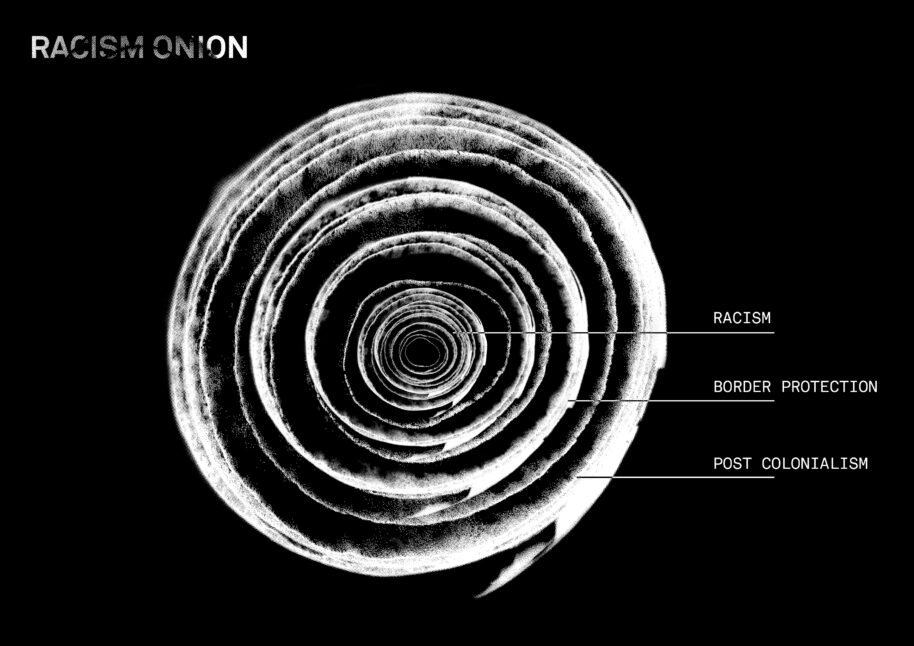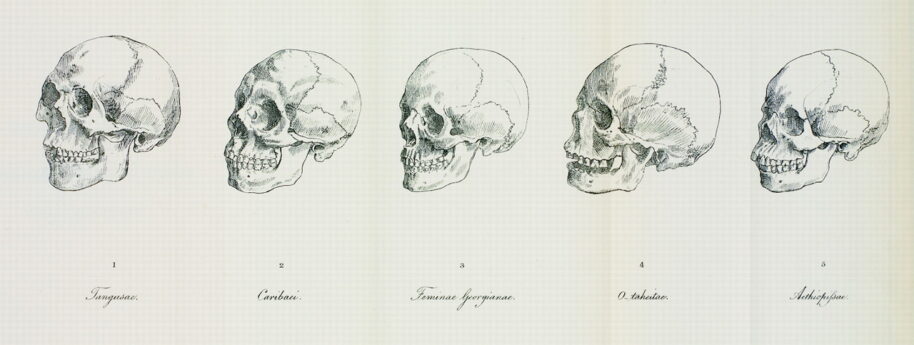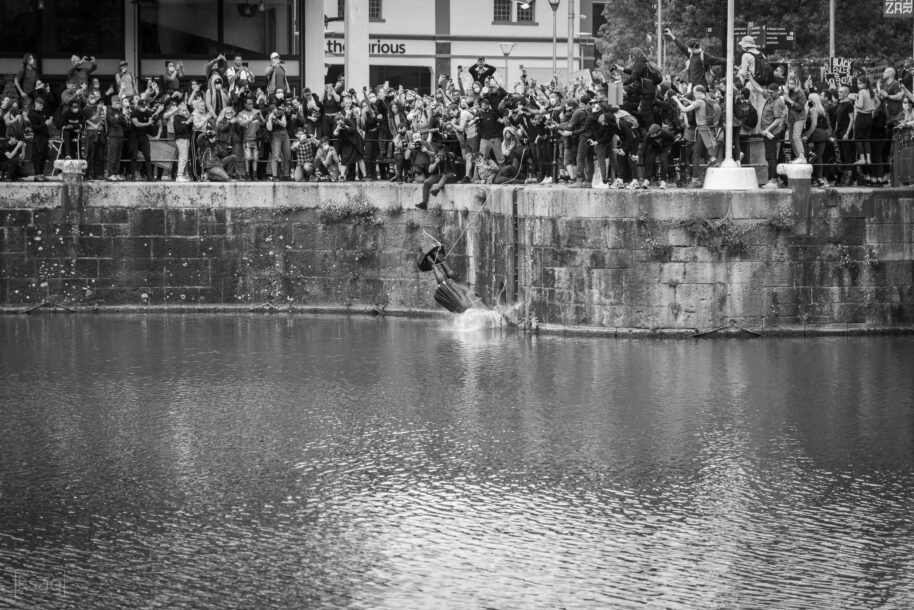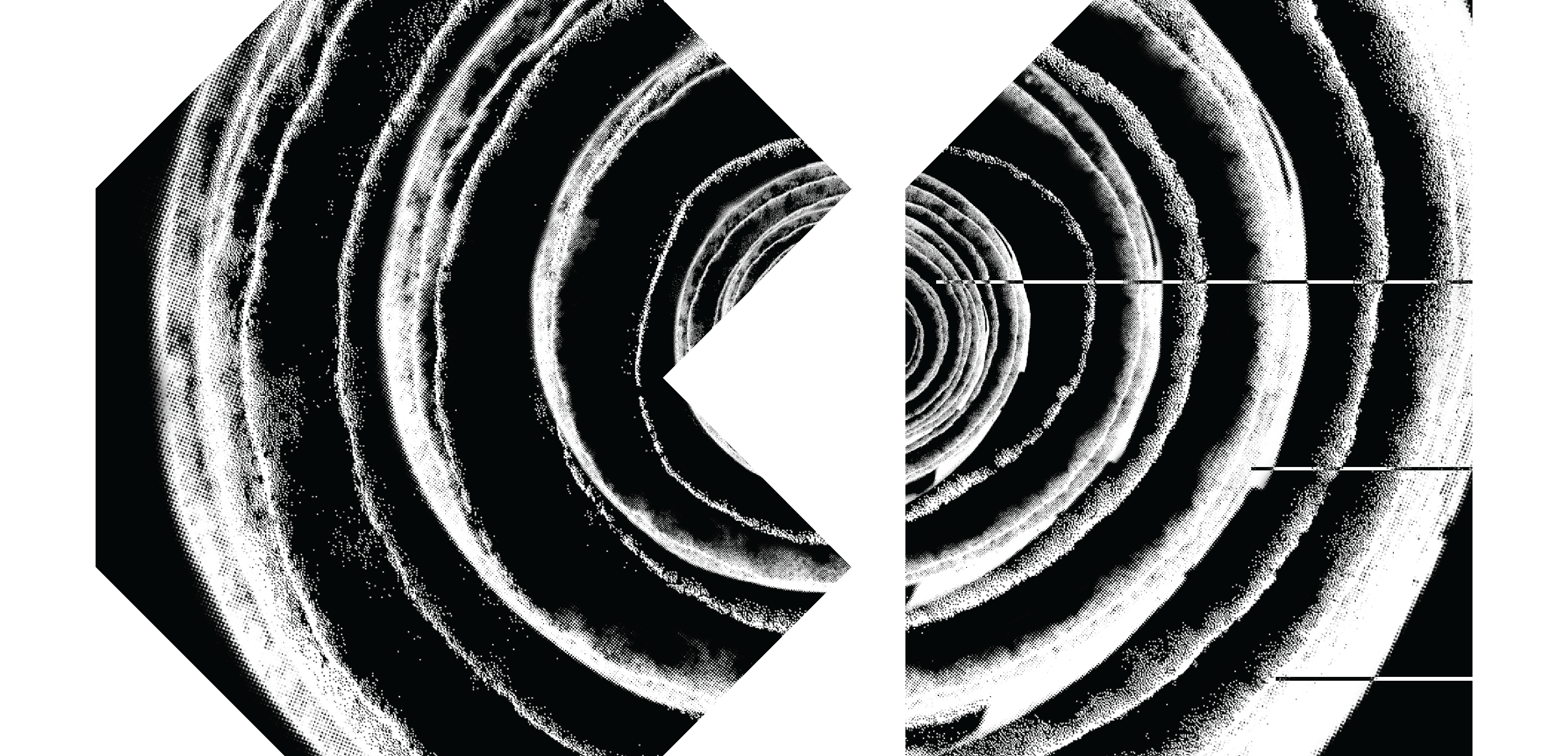The racism onion has discrimination at its core.
You do not need to be American to be moved by the seismic events that shook cities and mobilized people around the world in response to police brutality against Black people in the US in the summer of 2020. However, if you have ever been subjected to some form of discrimination, no matter where you are or where you come from, you certainly felt angry, triggered and revolted at the sight of the murder of George Floyd, and most recently the shooting of Jacob Blake, in a way that is hard to capture in words.
The succession of protests, the state of unrest, and the difficult yet necessary conversations that followed these incidents activated a sense of urgency to reflect on my own experience with racism. I came to the realization that discrimination takes different shapes and forms depending on who we are, our particular local circumstances. That is what I came to call the Racism Onion.
The Racism Onion has discrimination at its core. Although it may be manifested differently depending on the context and the subject, discrimination, in my view, is a result of a dominant group holding the keys to policies and systems. According to Larry Diamond, a political sociologist and contemporary scholar who studies democracy at Stanford University in California, ‘many deep thinkers about politics, from Plato to the authors of the US constitution, have worried about the vulnerability of pure democracy to the tyranny of the majority’.1 In the context described by Diamond, the rights of the majority are universal; they remain unquestioned even if they are guaranteed to the detriment of equality and civil liberty.
In the world’s greatest democracies, the majority has the power to arbitrate between what is right and what is wrong. They decide about who is safe and who is a threat in a way that puts their agendas at the forefront. This paradigm undermines minorities who have little to no power to influence critical issues that not only shape the nation but that may threaten their livelihood.
Although it may be manifested differently depending on the context and the subject, discrimination, in my view, is a result of a dominant group holding the keys to policies and systems.
In the current state of the world marked by unprecedented levels of polarization and propaganda, people seem to have lost faith in traditional political institutions. Western countries have been steadily dominated by a nationalist discourse, which aims to mobilize people by tapping into their fears. In this current context, advancing the agendas of the majority relies heavily on distancing and marginalizing minority groups by weaponizing their religion, race, ethnicity, and more, or in other words, othering them, as I will discuss in more detail below.
I use the layers of the Racism Onion to reflect about my own lived experience and observations through different roles I have taken in society, sometimes more than one at a time: first as an immigrant, second as an international development practitioner, and third as a traveler from the ‘developing’ (or formally colonized) world. The layers depicted in this three-article series stem from my own conviction that discriminating and othering do not happen in a vacuum or in specific societies and institutional silos. It is in fact the same mindset that is mimicked again and again at the level of the community, the nation, all the way to the much broader scope of international relations. There may surely be other layers in between, but my point is that for discrimination to exist, it does not have to be flagrant or shocking like what happened to Breonna Taylor or other Black people in America. There have been more subtle ways to discriminate and to marginalize that are less fatal, but that does not make them acceptable in any society and under any circumstance.

Circle I: In Searching for My Identity, I Stumbled on Racism
I have lived abroad for the past ten years. I left Morocco to pursue my graduate studies as a Fulbright Scholar at New York University. By leaving home, I intended to pursue higher education, to broaden my exposure to other cultures and to step outside of what is comfortable and familiar in one of the most eclectic cities of our time: New York. Little did I know that this journey would put the search for my identity at the centre of the living-abroad experience.
In America people know very little about Morocco. The Moroccan diaspora2 is quite small across the US, and especially in New York. So during the seven years I lived there, I was faced with more curiosity and innocence than judgement. Some people thought Morocco was in Latin America and asked me ‘Hablas Español?’ Others confused it with Monaco, joking that they did not notice it when they flew past the country on their way to France. While some others reduced it to Marrakech (an exotic destination for tourists) or Casablanca, inspired from the romantic 1942 film where Rick and Ilsa fall in love in the fictional Rick’s Café. Very few knew Morocco as I did.
This did not bother me initially. It in fact gave me space to tell a story about my own country, my heritage, and through it, my personal story as an individual in search of something greater than what I was born with. What was confusing in America was race. When submitting job applications, applying for an ID/ driver’s license or soliciting medical services, I had to check the Race Box. I have never felt like I belonged to any particular category that was mentioned, so I often checked Others. In doing that, I refused to adhere to a system that I did not identify with and that, in my mind, wants to box me into a skin colour, a category or a minority group.
On the spectrum of Whiteness and Blackness, there is a host of other colours and a complex history that can not be addressed through a yes/no answer.
I also learned to sit through the discomfort of answering the following question from some of my white American friends: Do you consider yourself Black? Let’s just be clear, this question is loaded and intrusive, because it neglects the complex history of Morocco: the migration of populations from Eastern Africa, the Arabization and Islamization of Amazigh populations across North Africa (often referred to as Berber), the involvement of Morocco in the transatlantic slave trade followed by the European colonization, when Morocco was divided between France and Spain while Tangiers, the city at the northern tip of the country was an international colony. That is all to say that on the spectrum of Whiteness and Blackness, there is a host of other colours and a complex history that can not be addressed through a yes/no answer.
The Nigerian author Chimamanda Addichie Ngozi said: ‘I wasn’t black until I came to America. I became Black in America.’ Reading her statement, which she further details in her novel Americanah, confirms that categorizations such as race have often been created by people who have little to no familiarity with our communities. Looking a bit more deeply into the topic of race, I have learned that the Human Race Classification was first defined in 1785 by German anthropologist Johann Friedrich Blumenbach, one of the most celebrated scientists of the Enlightenment. He identified five categories of the human race: Caucasian, Mongolian, Malayan, Ethiopian, and American. The categorization was based on geography and appearance. In that order, Caucasian, having the lightest skin-tone, were named after Mount Caucasus because according to Blumenbach ‘its neighborhood, and especially its southern slope, produces the most beautiful race of men’.3

While these categories may initially have been intended to organize and make sense of the world’s diversity, we have to acknowledge that classifications are more often than not bias- and hierarchy- prone. Simplistic explanations about complex topics such as race and identity are presented as a way to help those who share a similar world view to grasp them. As a result of this one-sided approach, a world of 190 nations is reduced to a list of five races. This eighteenth-century perception of the world around us has unfortunately not evolved. The elites, the majority groups, the Global North, or the developed nations are still abiding by paradigms where they see and more importantly document the world from their own perspective.
When there is a conflict of interest, these very categories are weaponized to other undesired groups so as to advance the majority’s socio-political and economic interests.
Othering4, according to the Othering and Belonging Institute, is defined as a set of dynamics, processes, and structures that engender marginality and persistent inequality across any of the full range of human differences based on group identities. Dimensions of othering include, but are not limited to, religion, sex, race, ethnicity, socioeconomic status (class), disability, sexual orientation, and skin tone.
Othering is a fundamental step towards dehumanizing.
Throughout history, othering has been used as a divisive method to exclude certain societal groups. During the Second World War, Nazi Germany saw Jewish people as others. In America, Black people were enslaved, and hence treated as less human. In some societies, women are still perceived as inferior to men. More recently, othering has led to erupting violence between the ethnically Burmese Buddhist majority and the Rohingyas, the Muslim ethnic minority, in Myanmar in 2012, causing hundreds of thousands of Rohingyas to flea persecution and thus be forced from their homes into neighbouring countries.
Othering is a fundamental step towards dehumanizing. According to social researcher Brené Brown, ‘once we see people on “the other side” of a conflict as morally inferior and even dangerous, the conflict starts being framed as good versus evil.’ She also writes, ‘dehumanizing always starts with language’. If we think about the language that has been used to stereotype or stigmatize minority groups over time, it often denigrates these groups and reduces them to a bunch of pejorative attributes. For instance, when Donald Trump called Mexican migrants ‘drug dealers, criminals and rapists’ during his second presidential campaign, his aim was to strip away their humanity and to create a negative association in the minds of voters while capitalizing on fear. Such language often holds within it a hidden, yet powerful call to action: act or else, they will take over. In this example, Trump’s hidden message is: if you do not elect me as your president, Mexicans will cross the border and harm you. Once we other, we create a mental distance where violence, humiliation, and other human catastrophes unfold.
In the US in order to avoid being boxed in, othered or stigmatized, I became a chameleon, taking on whatever personas were assumed about me. In order to minimize the risk of judgement, I fit myself into the mould that was created for me. This was easier than to fight or to correct people all the time. I wonder now: What if my identity was not that easy to hide? What if my outfit could be a pointer to my belief systems? What if my accent betrayed me and gave away my roots? I had to go to the Netherlands to experience that.
Once we other, we create a mental distance where violence, humiliation, and other human catastrophes unfold.
In contrast to America, being Moroccan in the Netherlands is far from anonymous and much closer to stigma and prejudice. For the first time, I felt deeply what it means to have a sticker on your forehead no matter who you choose to be. I could see the initial curiosity quickly replaced by judgement as soon as people learned that I am from Morocco. During the first few months, my answer to the question ‘Where are you from?’ had an embedded justification in it: ‘I am from Morocco, but I lived in New York for the past seven years’.
Judging by the level of stigma and negative media coverage, I initially believed that Moroccans were the largest immigrant group in the Netherlands. The reality is that Moroccans are only the third biggest migrant group (2.2 per cent) after Indonesians (4.2 per cent) and Turks (2.4 per cent). While racism may not be obvious for a Moroccan living in the US, if you ask a Moroccan immigrant in the Netherlands about racism, even if they are second or third generation, they will tell you racism exists in the Netherlands, it is just discreet and hard to notice. Yet, when you learn that 40 percent of Moroccan men between the ages of twelve and twenty-four have been arrested by the police5 and when you see them being targeted by far-right political campaigns, you start to understand more about systemic racism in the Netherlands.
So it was no surprise that after George Floyd’s murder, Black Lives Matter protests transcended the borders of American cities. People around the world connected with the injustice, discrimination and denounced oppressive systems that are used against them. The size of the protests in the Netherlands was overwhelming. In Amsterdam and Rotterdam, the crowds were expected to be in the hundreds but exceeded five thousand people in each city.

In the wake of these protests, the Dutch Prime Minister Mark Rutte made the following statement:
The underlying issue of racism is not just something in America, people experience the same things in the Netherlands that they experience there. There are people in the Netherlands too who are judged not on their future but on their past, their background, who are spoken to not as individuals but because of the group they come from, not for their behaviour but for their religious beliefs. It happens in the Netherlands as well, it affects a lot of people in this country.6
However, weeks later, the Prime Minister refused to apologize for slavery because he believes that that ‘apologies form a risk that society will be polarized even more’. These conflicting statements confirm the ambiguity of the Dutch government’s position where on the one hand, they acknowledge systemic racism and on the other refuse to make amends and real repairs for the affected segments of society. In fact, the current movements advocating for Black people’s rights are emphasizing that these half-baked statements are no longer enough. There is a call to action to every government that has contributed to the current situation through its systems and ideologies.
In a world with a polarized political climate not only in the US or the Netherlands, but across most of the world’s democracies, it often seems that isolation, othering and blame are preferred to hard conversations. These are conversations that revisit the existing systems and that question the distribution of privilege in contemporary society. And until they take place at the governmental and institutional levels, it seems that going to the streets will be the only way to manifest the anger and the exasperation of the people that are sick and tired of being called minorities and put at a disadvantage in the system by default.
What could happen if we all engaged in an exercise where we question our behaviour and stereotypes about people we call different or other?
The silver lining from these protests around the world and the concurrent global conversations is that we seem to have noticed that for real positive change to happen, it is no longer enough to talk about Black people having equal rights; it is equally important for White people, at a minimum, to acknowledge their own privilege, educate themselves on how laws and systems have served their interests time and time again, and to be an active part of the solution in order to course correct.
One wonders, what could happen if we all engaged in an exercise where we question our behaviour and stereotypes about people we call different or other? What if we took the time to acknowledge the privilege that we are born with, and that others lack just by virtue of where they were born? What if we took a revisionist look at the colonial history and the legacies countries have left across the world? What if we adopted an attitude of repair rather than silence?
These questions are not new. Others before us have grappled with them. In fact, the day after Dr Martin Luther King, Jr was shot in 1968, Jane Elliot, a schoolteacher, assigned a social exercise for her White students in order to help them really understand the power of privilege and the impact of racial prejudice. ‘How do you think it would feel to be a Negro boy or girl?’ she asked the children. ‘It would be hard to know, wouldn’t it, unless we actually experienced discrimination ourselves. Would you like to find out?’. Her blue eyes/ brown eyes experiment7was born when she separated her class into two groups: The blue-eyed group was asked to put on green construction paper armbands. She then told her students that ‘the brown-eyed people are the better people in this room. They are cleaner and they are smarter.’ There started the distribution of privilege in an environment as small as a class of twenty-eight students. Her point was to show how ridiculous it is that skin colour is a powerful factor in the distribution of power, privilege and prejudice. No-one would agree that we should differentiate between people based on the colour of their eyes. The colour of the eyes is not a defining factor in our lives, yet we associate skin colour with so much more (intelligence, wealth, social status, and so on). What is frightening is that we tend to project so much meaning onto someone’s skin colour, where we are able to build a whole story in our head about who they are. Even worse, we may determine their faith without knowing a single fact about them, and all of it is happening at a subconscious level because of stories we have been told, stories that we proudly call our history and heritage.
I am no expert on the subject of racism; I am in fact educating myself about the topic as I go, even in my own country, but my own experience has confirmed this simple fact: When we choose the comfort of our ignorance to justify our foolish acts, we are being racist.
It is not enough to keep our biases in check and to question our privilege, we need to act.
When we choose to be a silent witness when people around us are screaming for help, we are being racist.
When we step to protect our ‘history’ at all cost (for example white supremacist monuments or Zwarte Piet) even when the choices made by our ancestors clearly cause pain to people in our community, we are being racist.

It is not enough to keep our biases in check and to question our privilege, we need to act. I am convinced more than ever before that every time we choose to make use of our privilege, we do so to the detriment of a group that society has labelled a minority or other.
- Heaven, Douglas (2017). ‘The Uncertain Future of Democracy’. Online. Available https://www.bbc.com/future/article/20170330-the-uncertain-future-of-democracy (accessed 5 September 2020). ↩
- Rockefeller Foundation-Aspen Institute Diaspora Program (2015). ‘The Moroccan Diaspora in the United States’. Online. Available: https://www.migrationpolicy.org/sites/default/files/publications/RAD-Morocco.pdf (accessed 30 September 2020). ↩
- Gould, Stephen Jay (1994). ‘The Geometer of Race’. Online. Available: https://www.discovermagazine.com/mind/the-geometer-of-race (accessed 3 October 2020). ↩
- Powel, John and Stephen Menendian (2017). ‘The Problem of Othering: Towards Inclusiveness and Belonging’. Online. Available: http://www.otheringandbelonging.org/the-problem-of-othering/ (accessed 13 September 2020). ↩
- Kern, Soeren (2011). ‘Moroccan Crime in the Netherlands & the Myths of Multiculturalism’. Online. Available: https://www.gatestoneinstitute.org/2624/moroccan-crime-netherlands (accessed 6 October 2020). ↩
- Darroch, Gordon (2020). ‘Rutte’s Recognition of ‘Systemic Problem’ of Racism is a Watershed Moment’. Online. Available: https://www.dutchnews.nl/news/2020/06/ruttes-recognition-of-systemic-problem-of-racism-is-a-watershed-moment/ (accessed 5 June 2020). ↩
- Bloom, G. Stephen G. (2005). ‘Lesson of a Lifetime’. Available: https://www.smithsonianmag.com/science-nature/lesson-of-a-lifetime-72754306/ (accessed 25 November 2020). ↩
